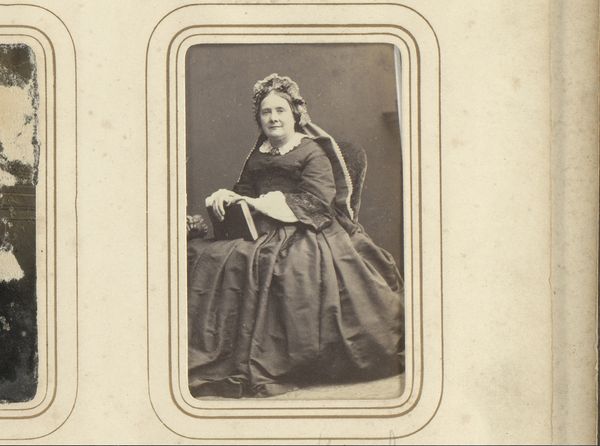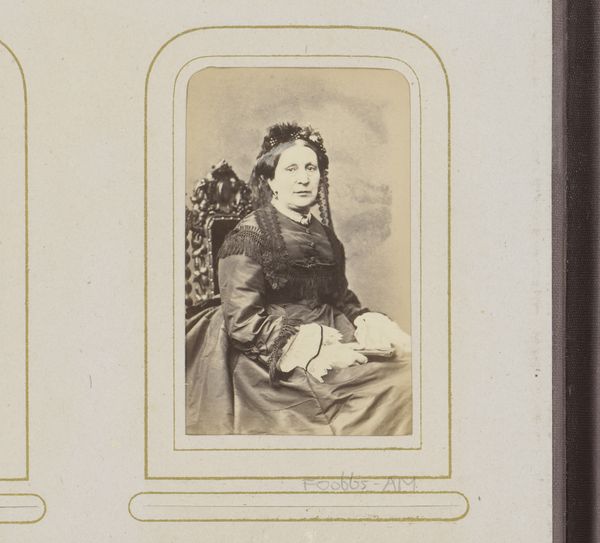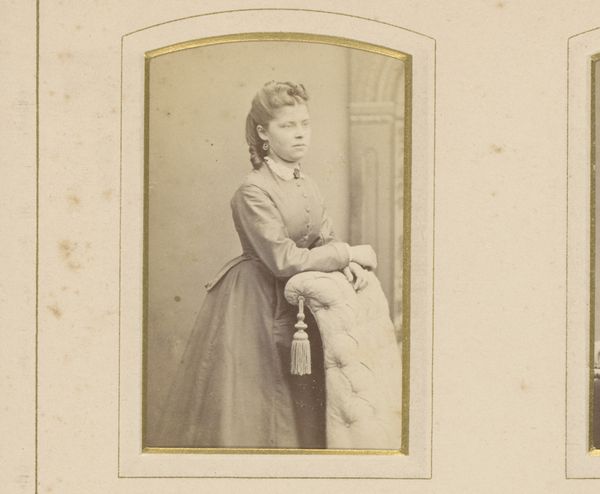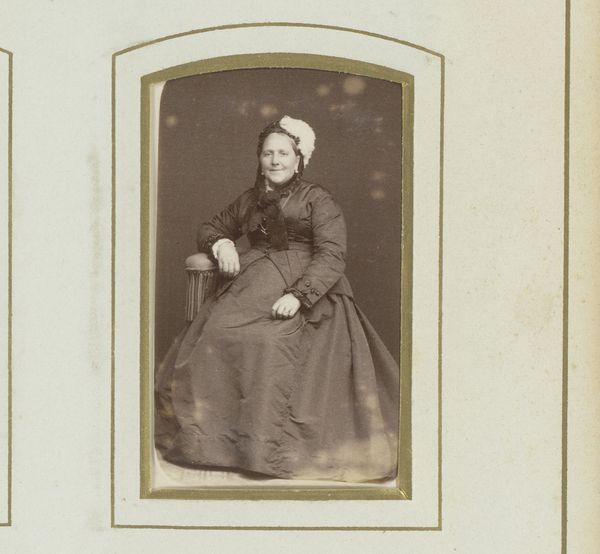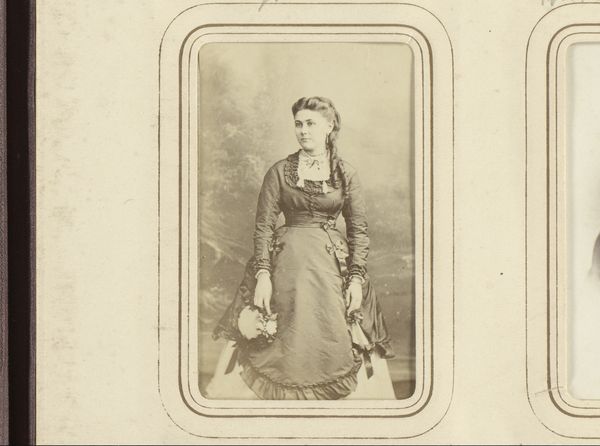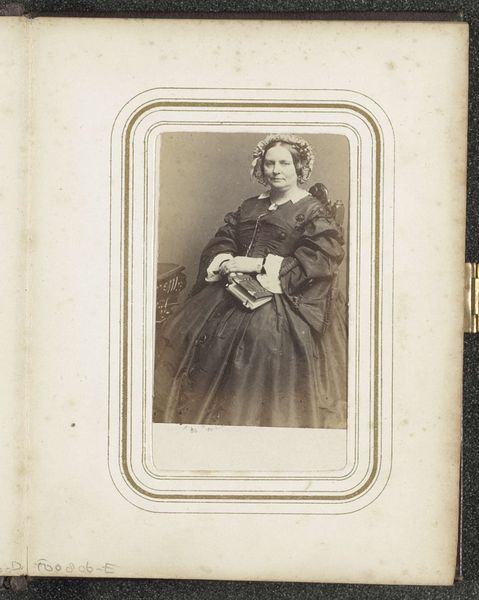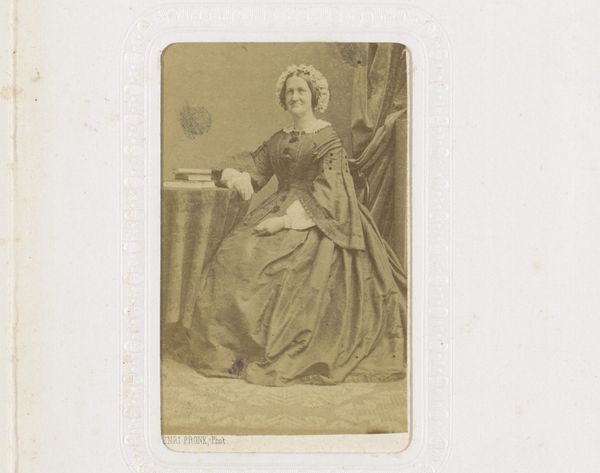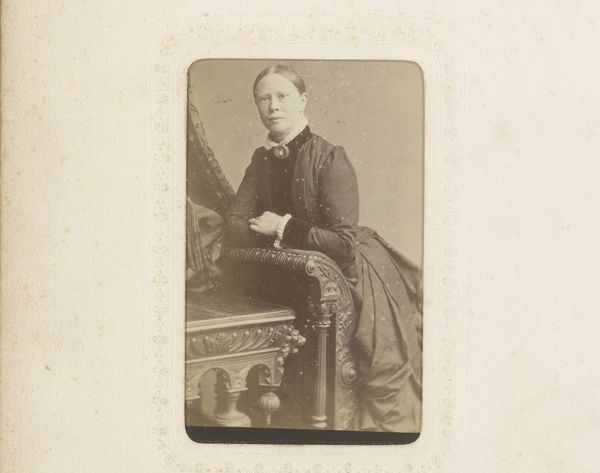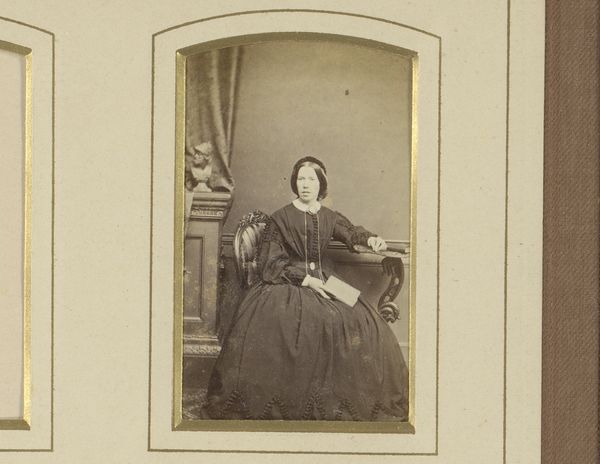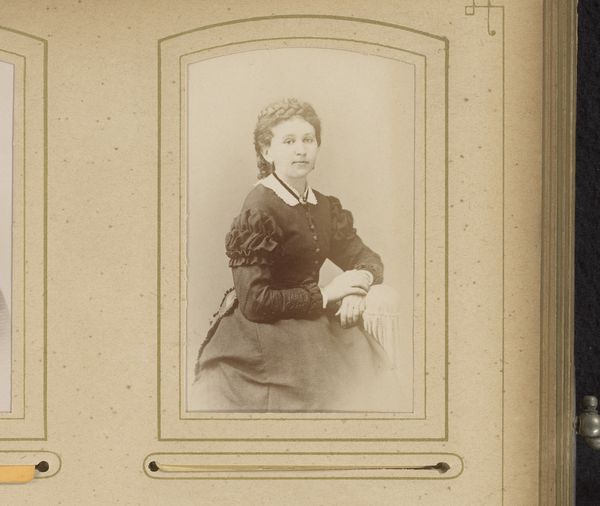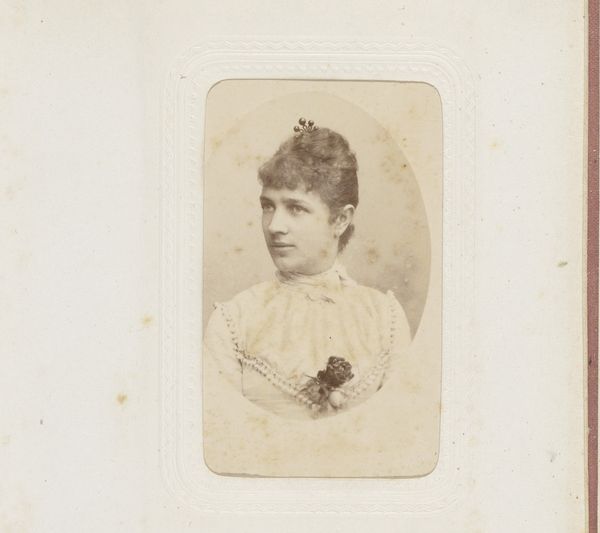
photography
#
portrait
#
photography
#
19th century
#
genre-painting
#
realism
Dimensions: height 81 mm, width 52 mm
Copyright: Rijks Museum: Open Domain
Curator: At the Rijksmuseum we find a striking portrait from Albert Greiner, taken sometime between 1861 and 1874. It’s called "Portret van een zittende vrouw met muts," or, "Portrait of a Seated Woman with Bonnet." Editor: There’s a stillness to it that really resonates. A weight, almost. She looks directly at us, and the composition, the soft light... it feels very intimate. Curator: Yes, that stillness is interesting given photography's disruptive arrival. Here’s this burgeoning medium finding its footing in representing society, labor, class. Look closely, and you'll notice the textures in her dress, the lace at her cuffs, the ornate details of the chair, and the modest material realities of 19th century portraiture. Photography democratized representation in new ways. Editor: I agree; the textures contribute so much. The lace hints at status, of course, but her gaze... there’s something deeply personal conveyed there. That direct eye contact carries significant psychological weight, don't you think? Consider what it meant, culturally, for a woman to present herself so directly to the gaze of a photographer – and therefore, a wider audience. What unspoken stories is she holding? The bonnet itself is also doing so much work, subtly proclaiming her position within a particular segment of society. Curator: It is a negotiation isn't it? We should remember that the process, involving collodion wet plates for these photographs, often dictated poses. It could have required sitters to hold expressions or specific poses for extended periods. I see it reflecting shifts in access to image-making technologies during industrialization. Who could afford this leisure? Whose likeness was captured and circulated? What was their place within production and reproduction itself? Editor: Absolutely. The democratization you mentioned has profound effects. And it is the sitter's agency—however constrained by class, gender, and the technology—that is compelling to me. That is how she confronts us. The objects surrounding her act as supporting characters in the drama of identity and its layered performance. Curator: Looking again at how Greiner works, this piece encapsulates much about 19th century portrait photography as document and commodity. Thank you, that gaze has new depths to explore now. Editor: Indeed. Her portrait leaves one pondering the silent language of attire and objects. What did visibility mean, and who was given the chance to be seen.
Comments
No comments
Be the first to comment and join the conversation on the ultimate creative platform.
